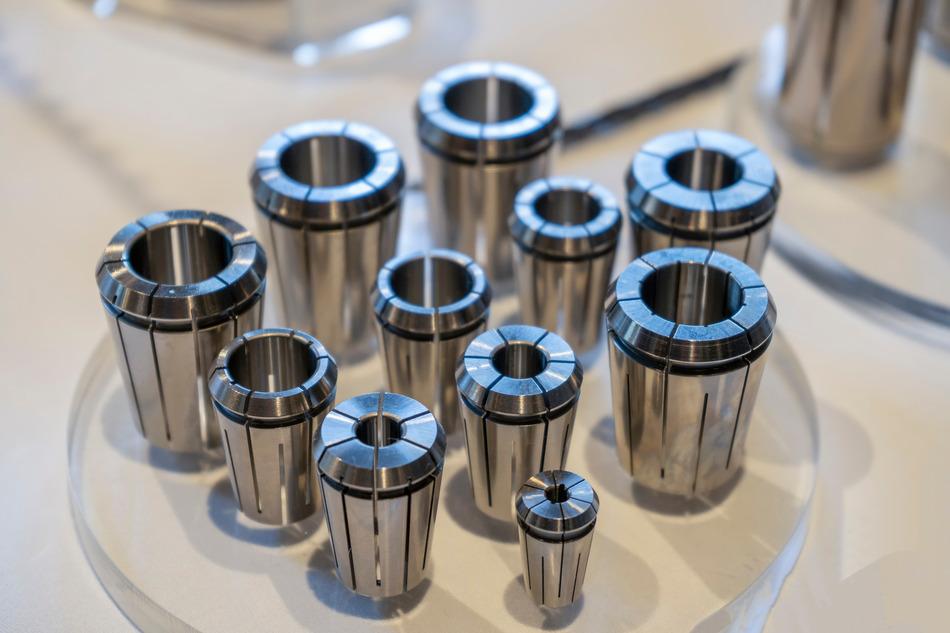The Role of CNC Prototyping in Product and Design Validation
When developing a new product, taking an idea from a concept to a real object involves multiple steps. CNC (Computer Numerical Control) prototyping makes this process easier. Using CNC machines, designers and engineers can create accurate prototypes, or models, of their products.
These CNC machined prototypes help companies test and improve their designs before full-scale production. By making physical models, teams can see if their design will work as planned and make any changes before producing the final product. CNC prototyping uses subtractive manufacturing—a process where a CNC machine removes layers of material to create shapes.
This allows companies to see and feel their design in real life, making it easier to spot any issues and fix them. By testing a prototype’s appearance and performance, CNC prototyping helps companies ensure that their products will be reliable and meet all requirements when they are finally produced.
For example, if there is a small issue with the shape or size of a part, creating a prototype allows designers to catch this issue early, long before the product reaches production. This saves companies time and money by avoiding mistakes that could be costly to fix.
Why Prototyping is Important in Product Development
Prototyping is important because it gives designers a physical model of their idea, making it easier to understand how the product will look and work. With CNC machining parts, designers can create models that show any potential flaws in the design. Prototypes made with CNC are very precise, meaning that they match the 3D CAD model almost perfectly. A CNC machined prototype allows designers to confirm that each part of their product will fit together correctly and function as expected.
For instance, if a company is developing a new car engine part, they can create a prototype with CNC to test how the part fits with other engine components. This testing phase gives confidence that the finished product will be safe and effective.
Understanding the CNC Machining Process
The CNC machining process begins with a digital design, usually created in a 3D CAD model. Designers then upload their CAD file to the CNC machine, which reads the design and follows the instructions to cut and shape the material. This process, known as subtractive manufacturing, removes material in a controlled way to create a part that matches the digital design.
CNC machines can use different techniques, such as CNC milling and CNC turning. CNC milling is used to make flat or angled surfaces, while CNC turning creates round or cylindrical parts. Together, these techniques allow CNC machines to make a wide variety of shapes, from simple pieces to highly complex designs. The prototype machining process provides a finished part that matches the desired size, weight, and shape of the final product.
Using CNC machines also provides a smooth surface finish on each part, which makes it easier to inspect and test. Designers can produce multiple versions of a prototype in a short amount of time, making adjustments with each version to improve the design. This ability to test and refine a prototype quickly helps companies stay on track with their production timelines.
Testing for Quality and Functionality
The main reason for creating prototypes is to test the quality and functionality of a product before it reaches customers. Prototyping with CNC lets companies examine how their design works in real-world situations. For example, if a company is designing a piece for a car engine, they can use the prototype to test how it performs under pressure and heat. Testing with CNC prototypes helps companies see if their product is strong enough to handle regular use.
Using a CNC machining service to create these prototypes allows designers to spot any weak points in the design. This type of testing is especially important in industries like automotive, aerospace, and healthcare, where any flaw could lead to serious issues. By testing early with CNC prototypes, companies can make improvements, ensuring that the finished product will meet high standards.
CNC prototypes also allow designers to closely examine important details, such as the surface finish and fit of each part. By using CNC machines, designers can be sure that each prototype matches the intended look and feel of the product. This high level of accuracy helps companies feel confident that their product will perform well once it is ready for full production.
Ensuring Safety and Compliance with CNC Prototyping
For many industries, safety and compliance are top priorities. Products must meet strict standards to ensure they are safe for users and meet regulatory requirements. CNC prototyping helps companies check that their designs meet these standards by allowing them to test how a product will perform in real-life situations. Prototyping with CNC gives companies the chance to confirm that every part is made to exact specifications, ensuring the finished product will be safe and reliable.
CNC prototyping can create parts that closely match the final product in size, shape, and material. This means companies can test prototypes in real-world settings to see how they respond to heat, pressure, or heavy use. For example, a part that will be used in a medical device must be carefully tested to make sure it’s durable and safe. By using a CNC machined prototype, companies can make sure the part will perform well under different conditions.
CNC machines also create prototypes with exact measurements, which is important for meeting industry regulations. Each part produced in the CNC machining process is made to fit tight tolerances, so companies can be sure their product meets all necessary standards. For industries like aerospace, automotive, and healthcare, following these standards is critical, and CNC prototyping helps companies achieve this. By testing prototypes early, companies can make sure they’re building products that meet safety and compliance requirements before full production begins.
Saving Money and Time with CNC Prototyping
One of the biggest benefits of CNC prototyping is that it is cost-effective. Traditional prototyping methods often require special tools or molds, which can be expensive and time-consuming. With CNC machines, companies can quickly produce accurate parts without needing extra equipment. This rapid prototyping process saves both time and money, as companies can test multiple versions of their product without waiting long for each new part.
CNC prototyping also offers flexibility. If designers want to change the design, they can simply adjust the CAD file and create a new prototype right away. This flexibility is useful because it allows companies to test and improve their design quickly. By making changes easily, companies can explore different options and find the best version of their product before moving to production.
In addition, CNC prototyping reduces waste by using only the amount of material needed for each part. This saves money and supports sustainability, which is important for companies that care about the environment. The CNC machining process helps reduce material costs and makes the production process more efficient.
Comparing CNC Prototyping to Additive Manufacturing
Additive manufacturing, or 3D printing, has become a popular method for creating prototypes, but CNC machining still has unique advantages. CNC machining is generally faster and produces high-quality prototypes that are strong enough for testing. With CNC, companies can create prototypes that are solid and durable, which is important for products that need to withstand stress or heat.
CNC machining is also more versatile in terms of materials. While 3D printing often works best with plastics, CNC can shape a variety of materials, including metals and composites. This allows companies to create prototypes that closely resemble the final product. Because CNC machines can produce prototypes with smooth, detailed surfaces, they are often preferred for projects where appearance and strength are both important.
By using CNC, companies can test the appearance and function of their product in materials that match the final design. This gives companies confidence that the product will perform well even in challenging conditions. CNC machining services provide parts that are strong and smooth, making them ideal for testing.
Moving from Prototyping to Final Production with CNC
Another advantage of CNC prototyping is that it can easily transition to full production. Once a prototype has been tested and refined, the CNC machining process can create identical parts in larger quantities. This makes CNC ideal for companies that want to move quickly from testing to production without needing to change equipment or processes.
CNC machines can also handle a variety of materials, allowing companies to keep using the same materials they tested in their prototype. This makes it easy to produce the finished product with the same high standards as the prototype. CNC machining ensures consistency across all parts, which is crucial for maintaining quality in large-scale production.
By catching design flaws or performance issues at the prototyping stage, companies can make necessary adjustments, ultimately saving time, reducing production costs, and ensuring high-quality results. One of the key advantages of CNC machined prototypes is their accuracy. CNC machines follow the specifications from 3D CAD models down to the smallest detail, producing prototypes that represent the intended product with precision.
By using CNC for both prototyping and production, companies can create machined parts that meet all requirements for strength, accuracy, and reliability. From start to finish, CNC machining offers a smooth process that allows companies to deliver high-quality products.
Why CNC Prototyping Matters in Product Development
CNC prototyping plays a vital role in bringing reliable products to market by allowing companies to turn their designs into precise, functional prototypes. Through CNC machining services, companies create prototypes that closely resemble the final product in terms of shape, size, and material. These prototypes allow designers to test the product’s real-world performance, helping them identify and resolve any issues early in development.
This accuracy enables companies to run rigorous tests on the prototype’s strength, durability, and functionality, giving them confidence that the final product will meet both internal standards and customer expectations. For high-stakes industries like automotive, aerospace, and medical devices, CNC prototyping provides a dependable way to verify that a product will be safe and effective.
In addition to accuracy, CNC prototyping offers flexibility. Teams can quickly modify designs, upload new CAD files, and create updated prototypes as needed. This rapid cycle of testing and refinement allows designers to experiment with different shapes, materials, or dimensions without causing delays. As a result, companies can optimize their product designs efficiently, ensuring that the final version performs well under various conditions.
With the benefits of precise, adaptable, and cost-effective prototypes, CNC helps companies refine their products and ensure they meet all necessary standards. Contact us today to see how our CNC prototyping services can support your product development and bring your ideas to life.
Looking to achieve precision and quality in your custom metal parts? In-House CNC can help. Contact us at (951) 540-4820 or sales@in-housecnc.com to see how our CNC machining services—whether milling, turning, or a combination of both—can meet your project’s exact specifications. Our team is committed to crafting high-quality parts for a range of industries, including automotive, aerospace, and healthcare, ensuring every part meets stringent industry standards. Reach out today to learn how we can support your production process with reliable, precise CNC solutions tailored to your industry’s needs.




